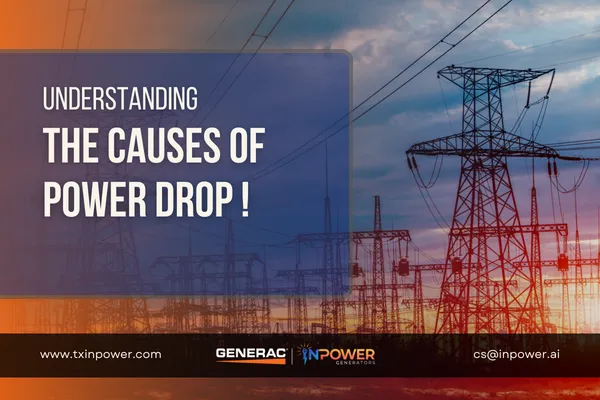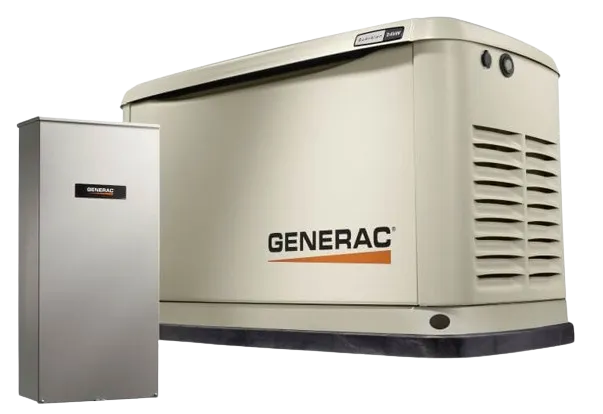OUR BLOG

Understanding The Causes Of Power Drop
An unanticipated disruption to the power source causes the power supply to abruptly cut off, a phenomenon known as a power drop. Power drops have a bad rap, but sometimes they're useful. Their ability to shield electronics from power surges and fluctuations is a major perk. In the event of a power outage, delicate electronics are protected.
The ease of installation is yet another perk of power drops. The installation begins with linking the power drop cable to the primary power supply and directing it to the specified spot. This adaptability makes it easy to drop power in strategic locations with high electrical demand.
It is also possible to tailor power drops to match individual needs. It is possible to modify power drops to suit the requirements of various systems and devices by changing the cable length and selecting the suitable voltage.
Causes Of Power Drop
Every electrical system experiences voltage drops. The first step in managing and reducing their effects is understanding their causes, which can occur for many reasons. The reasons behind the power drop in supply systems will be discussed later.
Poor or Loose Wiring
If the wires meant to supply electricity to your electrical device are not securely fastened, the connection is loose or of poor quality. This may occur immediately upon incorrectly connecting the power source or gradually over time as fasteners and cables deteriorate or corrode. Get in touch with a handyperson and have them look at your power supply; they should be able to fix whatever is wrong.
If your lights flicker, it's a good sign of a problem. Signs of a loose connection or power drops include lights that flicker or radios and televisions that crackle, particularly noticeable during storms. Remember that the faulty connection might be anywhere, including in front of the meter; in this instance, it would be wise to contact your utility provider for assistance.
Inadequate Load Sharing
Inadequate distribution of loads can also lead to variations in voltage. This situation occurs when multiple large appliances are linked to the same electrical line. This power drop is a typical problem with older houses because electricity can travel throughout a room on just one wire. You run the danger of the cables overheating and catching fire if you install more or stronger devices in homes with inadequate wiring because the load is simply too great for the installed wiring.
Electrical systems are not cheap, so running a single power line to a section of your house is a good option to save money. But you run the risk of running new wiring, which is more expensive than just running the wires, and the risks are high. This is why it's crucial to have a professional inspect the wiring in any house you're considering buying or building.
Overloaded Network
The phrase "overloaded network" can mean two different things in different contexts. In this context, voltage fluctuation is best understood as a change in electrical voltage that may occur locally and regionally.
An unexpected power drop here and there is likely if your neighborhood is developing rapidly. However, the voltage in your home may decrease solely if you have installed a large appliance or multiple such appliances. In such a situation, contact a local electrician who can assess the situation and advise you on the best course of action.
Electronic Devices with Defects
A flicker effect might be caused by an electrical device that isn't working properly. If your electrical device fails to do the following:
Things like heaters, radios, and televisions that are more than fifteen to twenty years old are typically included in this category.
This is a low-quality power drop product.
The item was either recently fixed, dropped or otherwise damaged.
Lightning damaged the product, exposing it to water or a very humid place like a basement. This typically occurs when multiple products are found to be defective when none of them were before.
It is possible to identify the source of power fluctuations by conducting a test. Unplug electronics as you go around the house. After the regular power source is back on, the troublesome device will be the one you unplugged last. Be cautious; rodents like rats and mice can gnaw through the product's wiring, putting you at risk of electric shock.
Problems By Power Lines
Interference from power lines is another potential issue. Factors that can cause a power drop in a power line that supplies electricity to your home include branches rubbing against it, birds landing on it, animals or vehicles colliding with power poles, or heavy ice deposits preventing power from reaching your home. Extreme cases can always cause voltage fluctuation.
Limited Ability to Support Cables
Voltage fluctuations can also be caused by cables that do not have enough carrying capacity. When power lines are damaged in vehicle accidents, there are fewer lines to carry electricity to your area, which can lead to an inadequate carrying capacity. Similarly, if you have recently bought powerful major appliances or live in an older home, there may be a lack of adequate cable carrying capacity in your home.
Minimizing Power Drops
Voltage drop is how the supplied energy of a voltage source is reduced as electric current moves through an electrical circuit's passive elements (elements that do not supply voltage). Voltage drops across loads, and other active circuit elements are preferred as the energy provided accomplishes useful work.
A voltage drop greater than 5% can harm the lifespan and the operational efficiency of electrical circuits and equipment. Therefore, an effort must be made to contain the voltage drop below 5%. There are many ways to minimize these power drops, which include decreasing the temperature of the conductor, decreasing the length of the conductor, increasing the quantity/size of the conductors, or reducing the power load.
Decreasing the Temperature of the Conductor
Regarding power flow, heated conductors will resist the flow and increase the percentage of voltage drop. If you want the voltage drop to be much smaller, the solution is simple: reduce the conductor's temperature. To determine the relationship between resistance and temperature, one must use the following formula:
Here is the equation:
R2: R1[1+a*(T2-T1)] = R2.
The variables R, T, and 'a,' which represent the electrical resistance coefficient of copper, are used. According to this equation, the resistance to 'a' drops as the temperature differential drops.
Shortening Conductor
A conductor's length is proportional to the supplied resistance. Power Drops are proportionate to the conductor's resistance, which decreases as its length decreases. Installing panels and subpanels adjacent to the external loads is optimal for reducing the conductor. For extremely delicate electrical devices, this is the panel to choose.
Increasing Size of Conductors
Increasing the number and size of the conductors lowers the resistance, which in turn lowers the Power Drop and improves efficiency. The total power loss, which occurs with conventionally sized conductors, can be reduced. An isolated conductor can be inserted to minimize voltage drops caused by grounding.
Lowering Power Load
One more thing you can do to lessen Power Drops is to connect fewer electrical devices to your circuit. Be careful that there aren't more than six outlets attached to each branch circuit. A circuit with 12 AWG or more capacity should be used for each receptacle. The voltage drop can be further reduced in this way.
If you have any hurdles drifting you away from professional service, then don't because In Power Generators is here to tighten up those screws and change your electrical lines effortlessly with almost zero hassles. If this needs generator installation services, then In Power Generators is also here to do that.
Just keep your mind clear and let the professional at In Power Generators sway away your worries and bottles in safety for you!

As Seen On Facebook, TikTok & Google
$1,500 INSTANT REBATE
WHEN YOU PURCHASE A WHOLE-HOUSE GENERATOR
What Our Customers Say About Us
Latest Reviews






5 Star Reviews




Serving Houston, Austin, San Antonio, DFW, Corpus Christi and Waco Markets





